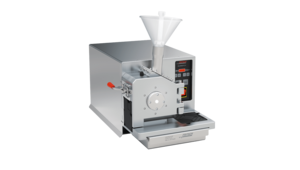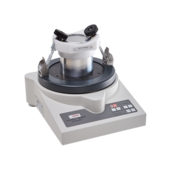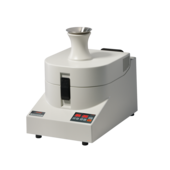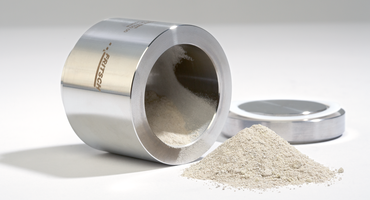Volver a vista general
New Applications for FRITSCH Laboratory Instruments
The directives 2003/108/EC (WEEE) and 2002/95/EC (RoHS) of the European Union have opened up new applications for FRITSCH Laboratory Equipment
These directives regulate the collection of electronic components by the manufacturer and limit the use of problematic substances such as chromium or mercury in the manufacture of electrical and electronic products. Compliance with these directives must be verified through appropriate analysis, meaning that laboratories performing such tests require suitable mills for sample preparation.
Heterogeneous samples require diverse instruments
The circuit boards which need to be ground are comprised of a mixture of substances. Metals, ceramic components and various plastics: these will all be found in the samples. In order to achieve a fineness appropriate for analysis (< 200 μm) of such a heterogeneous composition, it will be necessary to use various mills.
Universal Cutting Mill PULVERISETTE 19

As a first step, we use the FRITSCH Universal Cutting Mill PULVERISETTE 19 - 300-3000 rpm. It is ideal for gently grinding diverse materials, making possible the preliminary comminution of circuit boards to about 1 mm. To avoid disruptive heavy metal abrasion, we use a rotor with hardmetal tungsten carbide edges and fixed knives. This also increases the service life of the knives bearing in mind the abrasive metal components of the circuit boards. One decisive advantage of the PULVERISETTE 19 in comparison with the competition is the very simple and fast cleaning of the mill, which allows a high sample throughput.
Rotary Cone Sample Divider LABORETTE 27

As only a relatively small amount of material is required for the analysis but which must be representative, we comminute significantly more than the few grams of sample needed using the Universal Cutting Mill PULVERISETTE 19 and divide this with the FRITSCH Rotary Cone Sample Divider LABORETTE 27.
Variable Speed Rotor Mill PULVERISETTE 14 classic line

The representative sample quantity obtained in this way is then further comminuted in the FRITSCH Variable-Speed Rotor Mill PULVERISETTE 14 classic line. We use a sieve ring with trapezoidal perforation and a hole width of 0.12 or 0.2 mm. It is essential to avoid excessive thermal exposure (and in case of the analysis of mercury) the sample is first embrittled in liquid nitrogen (at -198° C). Because disruptive abrasion can occur here when using the rotor of stainless steel, we recommend the rotor and sieve with a coating of titanium nitrite (TiN-coated). Pure titanium would also be possible in individual cases, but it is significantly softer than the substances indicated above, which reduces the service life of the rotor and can also lead to destruction of the sieve.
Vibratory Micro Mill PULVERISETTE 0

If the sample of a few grams consists of a relatively high portion of metals, it is also possible to perform the comminution with the FRITSCH Vibratory Micro Mill PULVERISETTE 0. In particular, use of a mortar of hardmetal tungsten carbide and use of the Cryo-box, i.e. communition directly in liquid nitrogen, allows the analysis of mercury without thermal exposure leading to any loss of this substance.
In conclusion
The implementation of the above-mentioned EU directives will make the preparation of electrical and electronic scrap necessary in many laboratories. As always, FRITSCH is well prepared for these applications with the mills and instruments described.
-
Download the FRITSCH-report as PDF file
-
Detailed grinding reports
Volver a vista general








